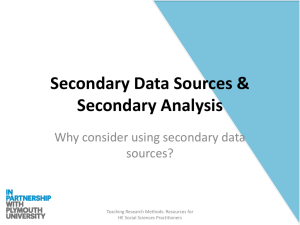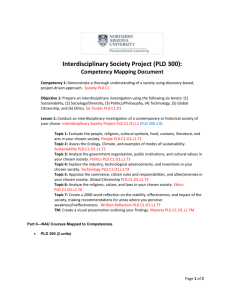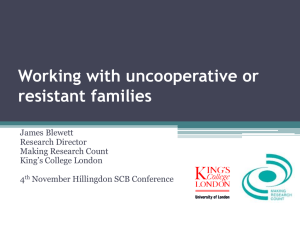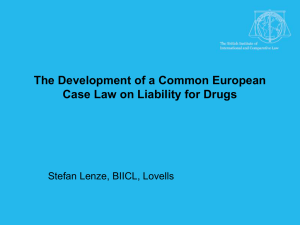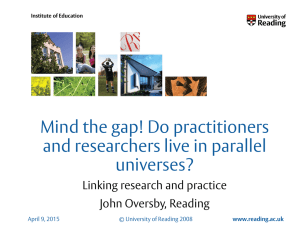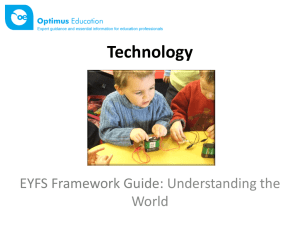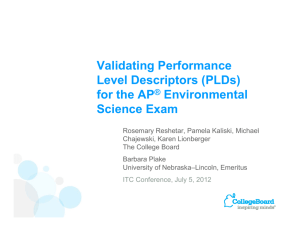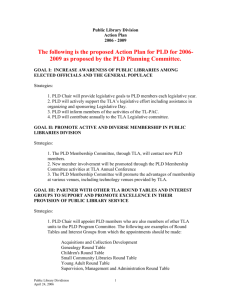Delivering Guidance in a Group Setting: optimising the potential for
advertisement
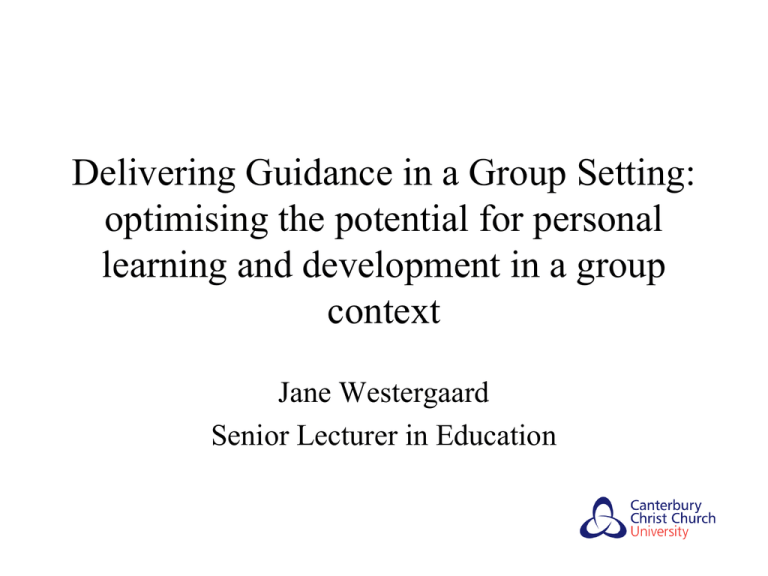
Delivering Guidance in a Group Setting: optimising the potential for personal learning and development in a group context Jane Westergaard Senior Lecturer in Education This session will explore: • The policy/practice context in which guidance practitioners facilitate group work • The concept of ‘guidance group work’ and its distinguishing features • Ways in which group work can lead to positive outcomes for participants • The role of the guidance practitioner in facilitating PLD in the group context The Influence of Policy on Group Work Practice in the UK • Government initiatives include… • Careers Education And Guidance in England: A national framework (2003). (developing a programme of careers education throughout secondary education 11 – 19) • Framework for Economic Well-Being 11 – 19 (2008). (recommended areas/topics to be addressed through careers education and guidance) • Delivering 14 – 19 Reform: Next Steps (2008). (changes in provision of careers education and guidance. Increase in educational institution based guidance practitioners) Group Work - pleasure or pain for guidance practitioners? • • • • • • Perceived resistance to group work…… Lack of confidence? Lack of clarity? Lack of knowledge/theoretical underpinning? Lack of training? Not what most guidance practitioners went into the work for? • Sub-teacher syndrome? Questions to assist reflection….. • What does ‘guidance’ group work set out to achieve, and what are its ‘unique features’? • How can guidance delivered in the group setting enhance guidance outcomes for clients? • What do guidance practitioners need in order to help them to feel confident about engaging in group work as well as one-to-one interventions? What does guidance group work set out to achieve? The principles of Personal Learning and Development group work (PLD). • The focus (topic) should meet the perceived needs of the participants • The focus should be about an aspect of participants’ lives, relevant at this point in time (i.e. learning about myself) • The content of the session should be interactive and adhere to principles of student-centred and experiential learning • Participants should become aware of a range of options available to them • Participants should have the opportunity to reflect on their own position in relation to the subject and make decisions as appropriate • Participants should be encouraged to plan individual action steps for the future How can PLD group work enhance guidance outcomes? • Engaging and interacting with others encourages participants to reflect on their own experiences and develop enhanced self awareness • Sharing experiences, information and knowledge with others helps to develop awareness of options/opportunities • Talking through options and hearing others’ perspectives can provide insight and enhance decision making • Voicing decisions and sharing action plans with others may motivate and encourage plans to become reality, leading to effective transitions What do guidance practitioners need in order to feel confident to deliver PLD group work? • Clarity about what group work sets out to achieve (i.e. PLD) • Understanding of a range of theoretical perspectives (learning theory, group dynamics) • Confidence in their use of guidance skills in the group context • A model/framework for effective planning of sessions to ensure positive outcomes for participants • Opportunities to be involved in delivering PLD group work The FAAST model • Focus - assessing the needs of the group and selecting an appropriate focus (topic) • Aim - identifying a purposeful and explicit aim for the session (and related objectives) • Activities - selecting activities that will ensure that the aim/objectives are met taking learning theory into account • Structure - ensuring that the session is structured in such a way to build and enhance the learning opportunities • Techniques - the facilitator uses a range of skills/techniques to assist participants to engage with learning and achieve positive outcomes To summarise… • Careers education and guidance policy may suggest greater involvement in group work • Some practitioners may fear this (others may not!!) • An understanding of PLD group work could encourage guidance practitioners to see themselves as expert and skilled practitioners in group work • Guidance outcomes can be achieved effectively in a group context • The FAAST model offers a useful starting point for planning, preparing and delivering group sessions
